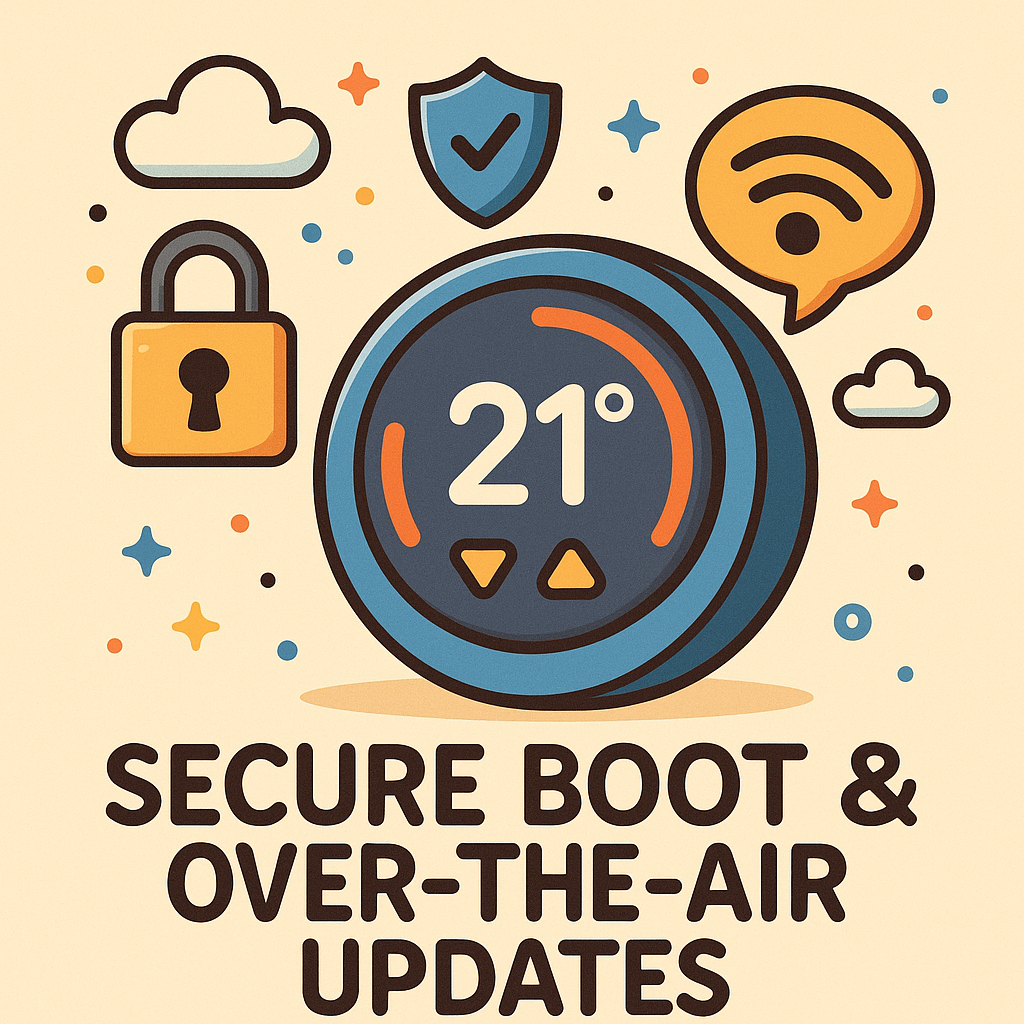Understanding Secure Boot in Smart Thermostats
Smart thermostats are becoming integral components of modern home automation, and with this integration comes the responsibility to ensure their security. One of the foundational technologies for enhancing device security is Secure Boot. This mechanism ensures that only trusted firmware is executed during the boot process, preventing potential attackers from loading malicious code that could compromise the device.
At its core, Secure Boot relies on a cryptographic chain of trust. The firmware is signed with a private key, which is validated by a public key stored in the device’s hardware. When the thermostat powers on, it checks the integrity of the firmware against this trusted signature. If the firmware is tampered with, the device will refuse to boot, thereby protecting it from unauthorized access.
The Hardware Perspective
Implementing Secure Boot requires careful consideration of the underlying hardware. Many smart thermostats utilize System on Chips (SoCs) designed with hardware security modules (HSM). These modules store cryptographic keys securely and perform operations such as secure hashing and digital signatures. Selecting an SoC with robust security features is crucial; for instance, ARM’s TrustZone technology provides a secure environment for sensitive operations, allowing the thermostat to securely boot and perform updates without exposing critical keys to the main execution environment.
Challenges in Firmware Update Mechanisms
While Secure Boot lays the groundwork for a secure device, it must be complemented with a robust firmware update mechanism. Over-the-Air (OTA) updates are essential for maintaining device security, but they introduce their own set of challenges. The primary concern is ensuring that updates are authentic and have not been tampered with during transmission.
To mitigate this risk, OTA updates must be digitally signed. When a new firmware version is pushed, the thermostat verifies the signature before installation. However, managing the lifecycle of cryptographic keys for these signatures presents a challenge. Engineers must consider how to securely distribute and update these keys. This is often done using a combination of asymmetric cryptography for the signing process and symmetric cryptography for data encryption during transmission.
Real-World Design Trade-offs
In the real world, there are trade-offs between security, performance, and user experience. For instance, implementing a full Secure Boot and OTA update mechanism can introduce latency during the boot process, as the device performs signature verification and integrity checks. Engineers must balance this with the need for devices to start quickly, especially when users expect instant functionality.
Another trade-off involves the size of the firmware and the complexity of the update process. Smart thermostats often operate with limited memory and processing power. This limitation means that the firmware must be optimized for size while still maintaining robust security features. Engineers might choose to implement delta updates, which only send the changes between firmware versions rather than the entire firmware, thus minimizing the data transmitted and ensuring faster updates.
Design Decisions that Matter
The choice of communication protocols for OTA updates is another critical decision. Common protocols like HTTP or MQTT can be effective, but they must be secured using TLS to prevent man-in-the-middle attacks. Engineers must also consider the frequency of updates; too frequent updates can overwhelm the device and network, while infrequent updates can leave the device vulnerable. A well-thought-out update schedule that considers user behavior and network conditions can significantly enhance security without compromising performance.
Moreover, implementing a rollback mechanism is essential in case an update fails or introduces instability. This requires additional design considerations, such as maintaining a backup of the last known good firmware version and a reliable way to revert to it without compromising security.
Conclusion
Incorporating Secure Boot and OTA updates into smart thermostats is not just about adding features; it’s about fundamentally ensuring the security of devices that control critical aspects of home automation. By addressing the challenges and making informed design decisions, engineers can create smart thermostats that are both secure and user-friendly, paving the way for a more reliable smart home ecosystem.



